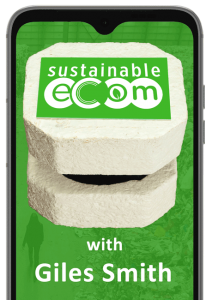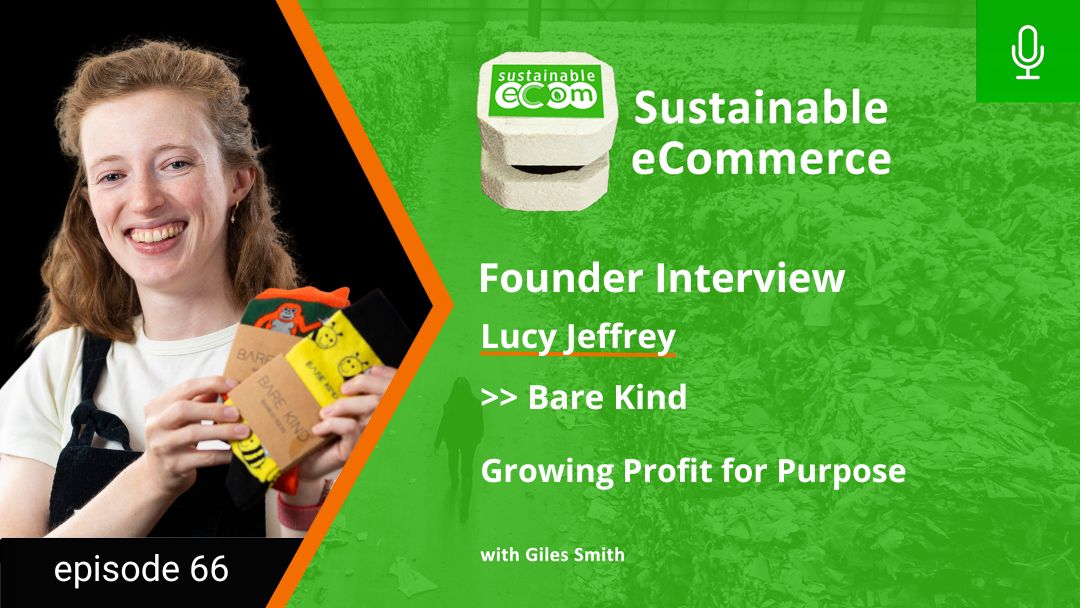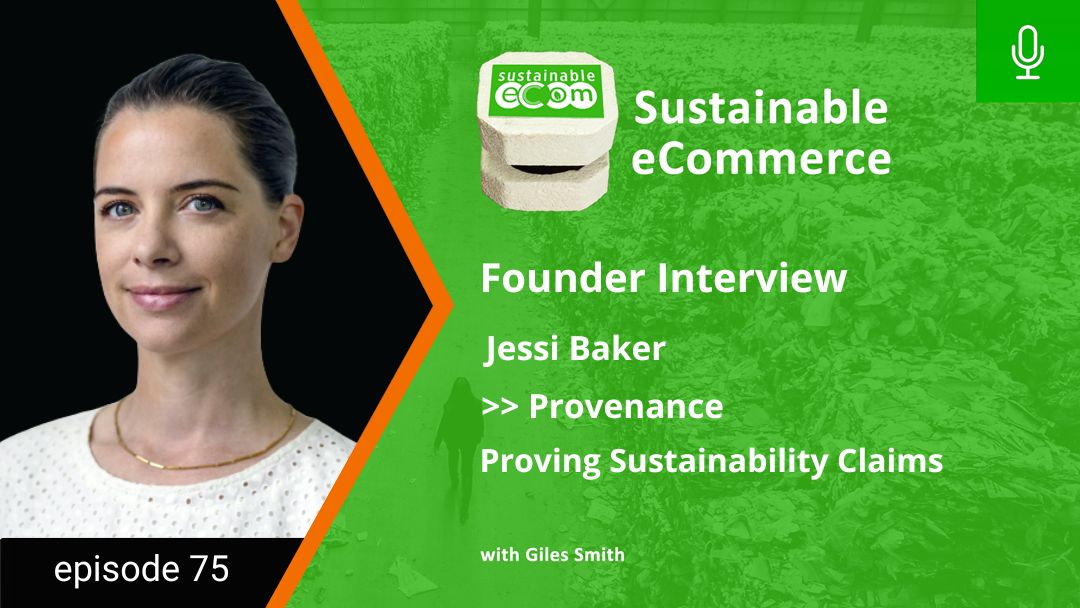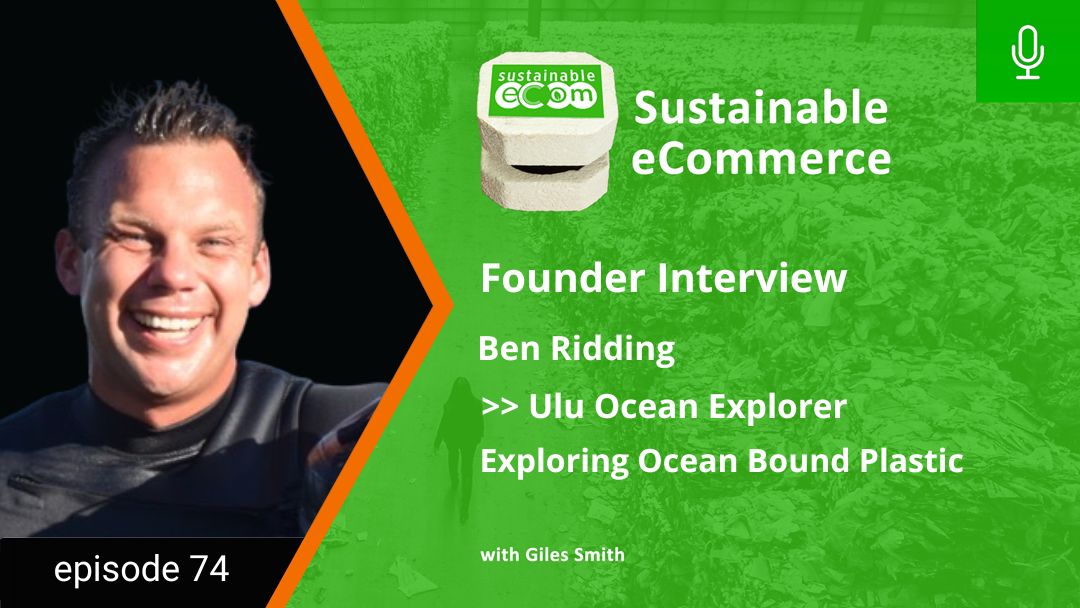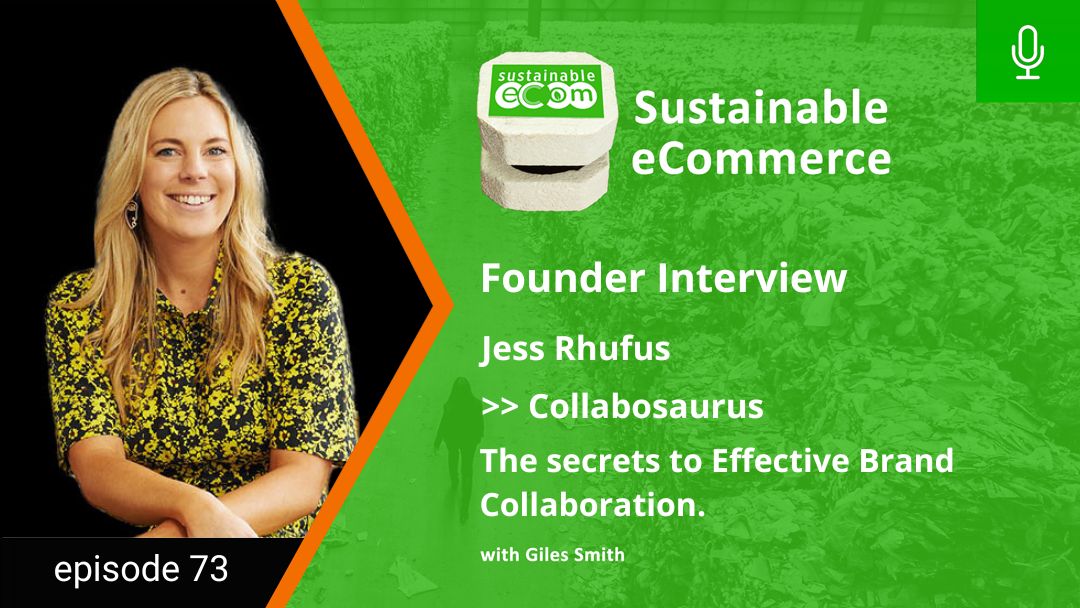Sustainable Ecommerce Podcast Episode 66
Today we’re chatting with a founder who’s every breath is focused on driving profit to enable her brand’s purpose. Lucy Jeffrey is the inspirational young founder of Bare Kind, a brand that makes a range of animal themed bamboo socks. With every sale, 10% of profits from go directly to supporting conservation projects protecting the featured animal.
Now, I asked Lucy to join me on the show, not just because she’s growing a really awesome sustainable brand, but because I became aware of the phenomenal success they’ve been having with wholesale, and I wanted to pick her brains about that for strategies you could use in your brands too. However, I was so fascinated by our discussion that we accidentally carried on for over an hour, so to make the content a little more manageable and fit in your day, I’ve decided to split the recording over 2 episodes.
Today’s episode then focuses on Profit and Impact. There are some really interesting lessons I want to share with you about communicating impact which are immensely important to understand if your brand is strongly purpose-driven. Towards the end, we touch on how important wholesale has been to building a bigger profit base for the brand, which of course enables more impact.
Then, in next week’s show, we’ll come back to the second half of our interview where we’ll explore the exact strategies Bare Kind are using to get into over 700 retail stores. I’ll be ruthlessly quizzing Lucy for tips and tricks for success in wholesaling, and we’ll learn how you can get your hands on even more insights to take your wholesale strategy to the next level.
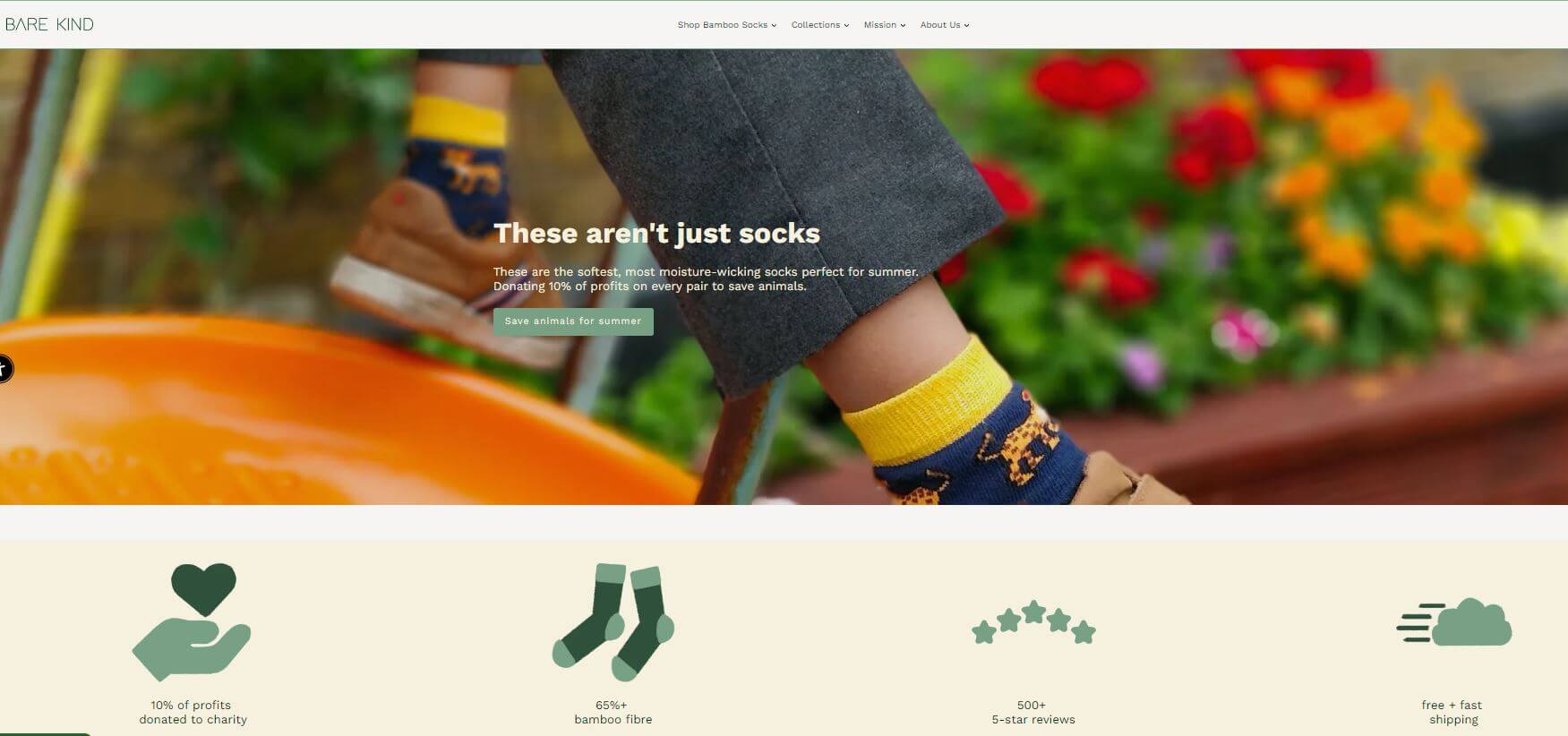
About Lucy Jeffry & Starting Bare Kind
With a lifelong passion for animals, Lucy attended the University East Anglia to study Biology. After a quick gap year in Australia, she joined the graduate programme at HSBC. During that time Lucy began to really consider her path forward, and started exploring some physical product businesses. She was inspired to start with reusable straws after seeing a friend carry one, before trying out tote bags and other reusable items.
The drive to build a business for good and come back to her love for saving animals results in their first charity partnership making turtle-themed socks in 2019, just as the pandemic hit. Lockdown forced lucy to shut the business, but as soon as lock down ended, Lucy took a bounceback loan from the UK government and dropped it all into Facebook Ads in November 2020. Luckily that campaign was a huge success and they sold out in early December, which proved the concept. She then resigned from her HSBC job in 2021, took another £50k in funding from her University Alumnai and developed several additional sock ranges, each linked to a specific charity partner.
From there she grew the brand from £20k in 2020 to over £200k in 2021, then over £540k in 2022. However, while the business has continued to be profitable, due to rising costs of customer acquisition, shipping costs etc, growth in the retail business between 2021 and 2022 did not result in an increase in profit, and the teams started to look at other strategies for growth.
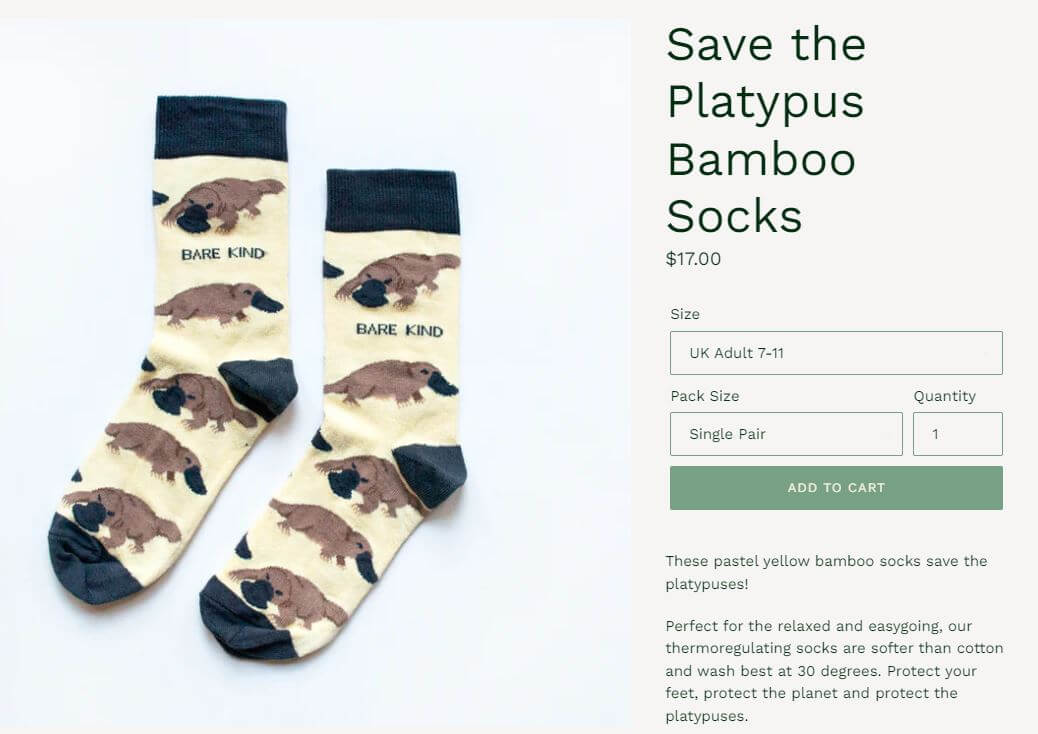
How Bare Kind Communicates Impact
With the brand’s core mission focuses on saving animals, communicating the mission and the brand’s impact has been critical to standing out and being able to command premium prices. Story elements are weaved all the way through the customer journey from Ads to post purchase content.
However, Lucy found communicating how much money was being donated did not result in excitement or engagement from customers. She realised that to make customers feel like they were part of the solution, she needed to be transparent about the actual impact their donations was making, and provide regular tangible updates. Annually the brand produces an impact report where you can see exactly what difference they are making as a community, and the results from each partnership are provided as a carousel on their home page.
Based on comments in reviews and post-purchase surveys, Lucy has confirmed that they ‘for good’ messaging is a key reason why people purchase from Bare Kind initially. However, the strategy could easily be a gimmick, much like ‘gift with donation’ strategies used to be. Customers come back and continue to purchase again from Bare Kind because the quality of the product is excellent.
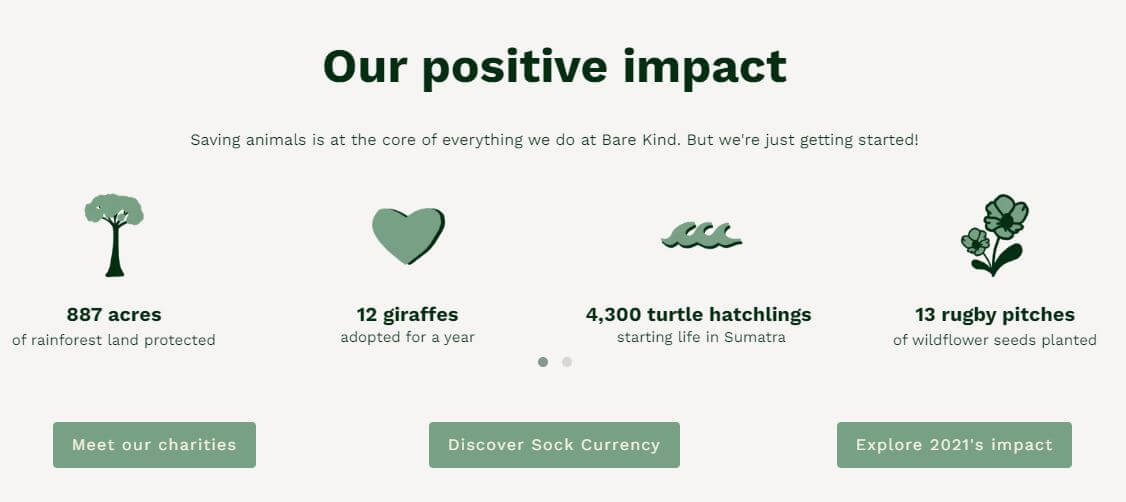
Main Reasons to Move your Sustainable Brand to Wholesale
On recognising that the online retail strategy was not as profitable as they expected (which meant a frustrating restriction to the impact they wanted to have), the team started to explore wholesale.
On the face of it, wholesale orders are less profitable per unit than retail orders which puts many brands off. However, Lucy believe there are still several reasons why Lucy wholesale could still be an important part of profitable growth for any sustainable brand.
- You are not absorbing the costs of order shipment. If you’re offering free shipping on customer orders, that cost goes straight against your gross margin, spread across a relatively small number of items. With wholesale, you may still have some shipping and delivery costs to cover, but those are spread over much larger orders
- Wholesale customers are higher value, so work done to convert them is much more valuable
- You’re mostly not having to pay the advertising costs to acquire the customers, and any money you do pay through platforms is only due after the order is placed
- It’s free marketing and brand awareness for your product. The more stores you can get into the more places where you can build brand recognition, which eventually can help improve digital marketing performance.
- For seasonal businesses, wholesale can be a major channel for smoothing out seasonality.
Should you go direct to wholesalers or use marketplaces?
Barekind started out going direct, but quickly converted to using marketplaces, with Faire being their main channel, alongside Creoate and Ankorstore for European sales uses.
These channels are like marketplaces for online retailers to find and buy products from brands. There is generally no cost to list or join the platform, but they do take commissions for the sales delivered. Using Faire as an example, when they bring you a new customer they take a 25% commission on the order, followed by 15% for trailing orders. That’s obviously a significant amount on top of the wholesale discount compared to retail, but you really have to compare that to the cost of acquisition for retail, especially with the rising costs on digital platforms.
However, when you bring customers onto the platform, or can prove that retail partners already on the platform have been your customers in the past, there is 0% commission. Investing in a strategy to acquire retail partners off platform and then convert them onto the platform is a core strategy to consider, as that then gives you a much lower blended cost of sale.
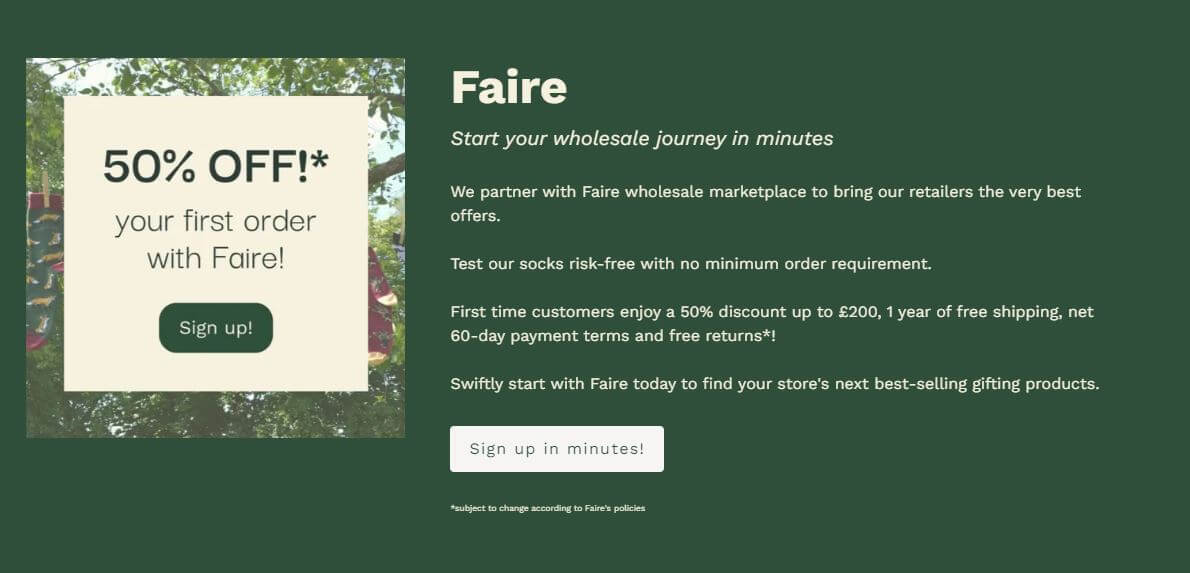
Why should you bring retailer partners onto the platform?
Firstly, Lucy believes it is a great shopping experience for the retailer, with access to lots of other potential brands to work with. They also offer the retailer 60 days net payment terms, while they guarantee your order payment and pay at 30 days. It therefore becomes a risk free way to offer credit terms as takes the headache out of chasing down invoices. Beyond that, a key to the strategy is that as more retailers buy from you, like any marketplace, the more visible your product becomes to new retailer discovery.
What’s next for Bare Kind?
Global domination in the sock world! Lucy continues to expand the range of socks they carry as well as the animal protection and conservation charities they support. They are also looking at bringing out a line of specialist socks, including one to support diabetes sufferers. The team are working on a fulfilment centre in the US to expand into that market, as well as centres in the EU and later Australia. To try out Barekind bamboo socks and help save animals, head to https://barekind.com

Top Takeouts
I want to talk about 3 powerfully important words that you have to consider when creating your brand messaging. Congruency, Impact and Transparency.
Let’s talk about Congruency first. If you’re new to the show or missed where we’ve talked about this before, when I say Congruency, I’m talking about the alignment of everything the brand does with the Brand’s mission.
Having a congruent brand is absolutely foundational to being able to convey an authentic message. It’s foundational to building consumer trust. It’s about making sure there’s a straight line of sight between the Brand Purpose, the operational activities and the eventual positive impact the brand is making.
Let’s look at Bare Kind. Their Brand Purpose is to “save animals”. Their Impact is directly aligned with that, dedicating 10% of profits from to charities & projects focused on protecting endangered animals and habitat conservation. So, the two things, Purpose and Impact are aligned, they’re congruent.
But what about business model? They’re making socks! Is that congruent with saving animals?
Well, it would be a bit of a stretch, except they’ve made it congruent by designing playful socks with animal themes, and more so, each animal theme is directly connected to the donations they make.
That means it’s not just congruent as a story, but they’ve also created a compelling narrative that customers can take part in too.
Now Lucy rightly said it could just be a gimmick, and they’ve placed significant focus on making high quality & more sustainable products using bamboo, but because of this obvious alignment, their story instantly feels authentic.
So let’s look at Communicating Impact next. Lucy described a kind of luke-warm reaction from customers when talking about how much money they’ve donated, or even worse, what percentage of profits goes to charity projects.
If you’re communicating your impact in those terms, I’m sorry to say that’s the best you can expect – a luke-warm reaction, especially if you’re a small or medium brand and the actual amount or money you’ve donated isn’t mindboggling.
What does it mean? What difference have the donations made? What confidence can a customer have that buying from you will result in a specific impact?
What Bare Kind do is leverage what we call collective impact as part of their brand story. They share very precise and tangible outcomes that have been achieved with each project they’ve worked with, which gives everyone a high degree of visibility of the real good that’s been achieved.
Lucy pointed out that their impact model definitely fragments their impact, smaller things can be achieved with each project, and that’s certainly something to consider. But what this model does is a way that I haven’t seen before, is it enables the customer to choose to support causes that really matter to them. In other words, it makes the customer the hero.
So I’m not saying it’s not OK to talk about amounts donated or percentage of profits allocated. Far from it, those are important dimensions, but it’s vital to include clarity on your actual tangible, quantifiable impact as a key part of your story.
So then lastly let’s talk about Transparency. It’s definitely a sliding scale. Most people think of transparency as supply chain. And Bare Kind talk about their Sedex and Oeko-Tex verified suppliers.
Then there’s impact transparency, the sort of thing we were just speaking about.
But right at the end of the interview I was struck by Lucy’s comment about ‘Building in Public’ and how they’re sharing everything they’re doing, including their Board Pack reviews openly.
It’s a new(ish) trend – and one that just might help address the very pervasive lack of trust that consumers have for brands, especially among Millennials and Gen Z.
Either way, Bare Kind are taking transparency very seriously, truly inviting customers in to be part of the journey. I haven’t seen many brands doing that, even among those who practice radical transparency, so it’s a trend to watch for sure.





